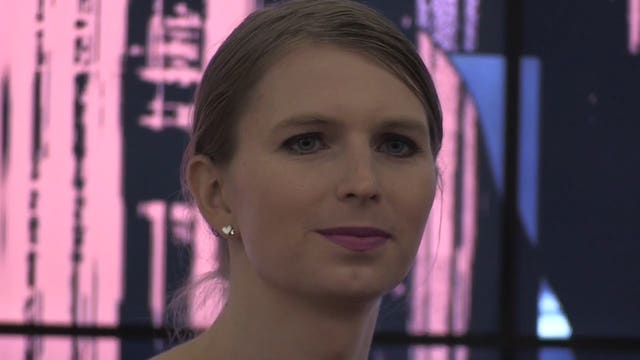
WikiLeaks founder Julian Assange will spend Christmas behind bars as he awaits a decision on his bid to avoid extradition to the United States.
The 49-year-old, who fathered two children while holed up at the Ecuadorian embassy in London for seven years, has already spent 16 months at Belmarsh top security jail.
He is wanted in the US over leaks of thousands of classified documents a decade ago, allegedly exposing US war crimes and abuses in Iraq, Afghanistan and Guantanamo Bay.
At the end of four weeks of evidence at the Old Bailey on Thursday, Judge Vanessa Baraitser adjourned the case until January 4 when she will deliver her ruling on whether Assange should be extradited.

She remanded Assange in custody and said he will next appear at Westminster Magistrates’ Court for an administrative hearing on October 29.
Assange’s legal team has called dozens of witnesses in a bid to persuade the district judge to block his extradition.
They have questioned the strength of the evidence against Assange, who faces 18 charges including a plot to hack computers and conspiracy to obtain and disclose national defence information.
Assange has refuted the claim he plotted with defence analyst Chelsea Manning to crack an encrypted password on US Department of Defence computers and that unredacted leaks by WikiLeaks put US informants’ lives at risk.
Witnesses have told the court the prosecution under the Donald Trump administration has been politically motivated, after an investigation launched under President Barack Obama failed to bring charges.
His lawyer Jennifer Robinson described a meeting in August 2017 in which he was offered a pardon allegedly on behalf of Mr Trump to identify the source of the Democratic National Committee leaks to WikiLeaks which boosted him in the 2016 election in order to end speculation over Russian involvement.
Meanwhile, security contractor was allegedly recruited by “American friends” to bug Assange’s meetings at the Ecuadorian embassy.
By December 2017, the US contacts were said to be “desperate”, and even discussed a potential kidnap or poison plot to end the stalemate.

US lawyer Eric Lewis told the court Mr Trump “wants to put Mr Assange in jail and keep him quiet”.
The defence say the US constitution’s first amendment on freedom of speech has previously protected publishers of leaks, and to prosecute would be a “chilling” precedent.
Other witnesses told of the likelihood that Assange would be subjected to harsh prison conditions under controversial Special Administrative Measures (Sams), more commonly reserved for dangerous terrorists.
If Assange was convicted, he could face up to 175 years in a Supermax ADX facility in Colorado, where convicted terrorist Abu Hamza has been housed under Sams in solitary confinement, the court heard.
Such conditions would be torturous for Assange, who was said to have Asperger’s syndrome.
Psychiatrists for the defence said he had suffered from severe depression and was a high suicide risk, it has been claimed.
Lawyers for the US Government have said the prospect of Assange being held under Sams is “speculative” and the sentence was likely to be much lower.
Ms Manning had been sentenced to 35 years over her role in leaking classified material, but was given clemency after seven years.
However, she was jailed again for contempt in 2019 and fined for refusing to testify in court about Assange.
A psychiatrist for the prosecution told the court that Assange’s depression was “moderate” and his suicide risk “manageable”.
Dr Nigel Blackwood pointed out Assange’s behaviour demonstrates he is a “resourceful” and “resilient” man capable of sharing banter with others.
However, the defence said an incident in May 2019 in which a razor was found hidden in Assange’s cell beneath underwear told a different story.
The evidence ended on Thursday with a series of witness statements summarised in court, including five from Assange’s solicitor, Gareth Peirce.
She said legally privileged material had been seized from the Ecuadorian embassy after his eviction, at the request of the US.
Mrs Peirce also claimed her own meetings with Assange in December 2017 and January 2018 were the subject of surveillance, with records handed to the US intelligence agencies.
“I was wholly unaware of that surveillance,” she said, although Assange “remained suspicious throughout that period”.
“There is a very high level of anxiety and fear that legal interviews with Mr Assange are continuing to be monitored,” she said.
“This fear is triggered by the clear evidence that surveillance had been taking place over a number of years.”
Mrs Peirce said this had had a “chilling effect” on the preparation for Assange’s extradition hearing and “effected confidence as to the confidentiality of his case”.
Throughout the hearings in Court 10, pro-Assange protesters have staged noisy and colourful demonstrations outside the historic central London court, shouting, banging drums and a glockenspiel.
Mr Assange’s father, John Shipton, had been joined by the artist Ai Weiwei and designer Dame Vivienne Westwood – who also lent their support.
Assange’s partner, Stella Moris, sat metres from Assange, who on three occasions leapt up in the dock as he became animated by the evidence.
In an unprecedented move brought about by Covid-19 restrictions, dozens of journalists watched by video link or in an socially-distanced courtroom next door as the majority of witnesses gave evidence remotely from the US.


Comments: Our rules
We want our comments to be a lively and valuable part of our community - a place where readers can debate and engage with the most important local issues. The ability to comment on our stories is a privilege, not a right, however, and that privilege may be withdrawn if it is abused or misused.
Please report any comments that break our rules.
Read the rules hereComments are closed on this article